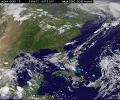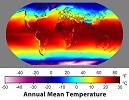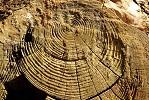Atmospheric science is the study of the atmosphere, including its processes, the effects of other systems and the effects of the atmosphere on these other systems. Atmospheric dynamics is the study of the observations and theory dealing with all motion systems of meteorological importance. The goal of dynamic atmospheric study is to explain the observed circulation on the basis of fundamental principles of physics. The objectives of these observations is to improve weather forecasting, developing methods for predicting seasonal and inter-annual climate fluctuations and understanding the implications of human induced perturbations on the global climate.
Many instruments are used in atmospheric science to preform experiments which include satellites, rocketsondes, radiosondes, weather balloons and lasers. Atmospheric science has recently been extended to the field of planetary science and the study of the atmospheres of the planets of the solar system. Similar experimental instruments are used to preform experiments on the atmosphere's of other planets.
Title Image Credit: NASA Goddard Space Flight Center / flickr.com
© BrainMass Inc. brainmass.com June 30, 2024, 9:22 am ad1c9bdddf


